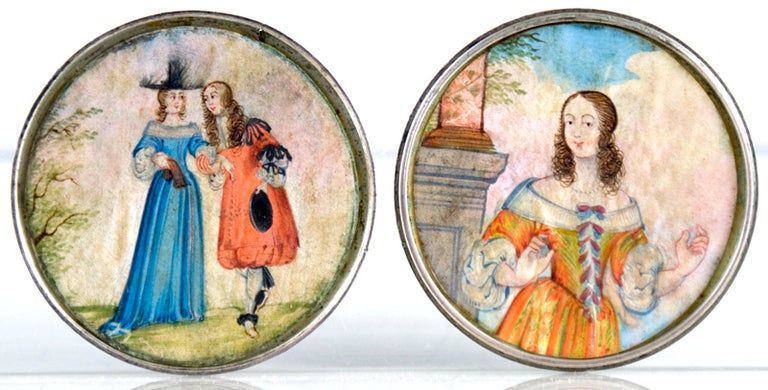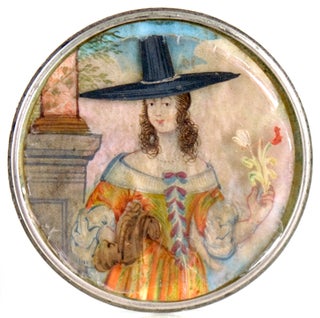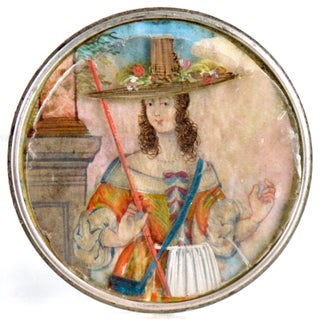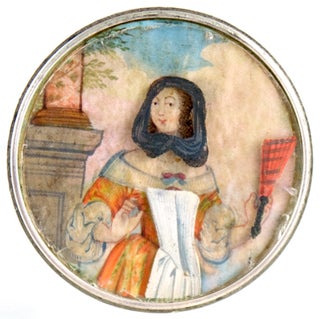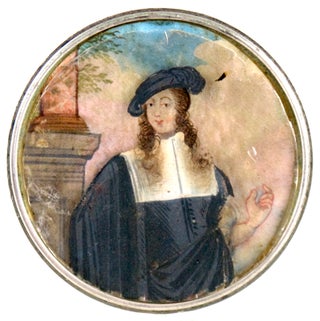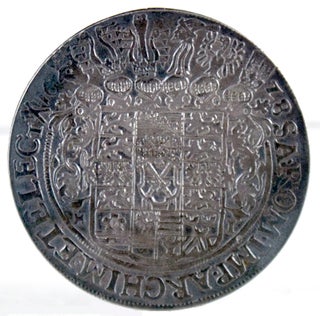Mica overlays in Electorate of Saxony thaler coin case.
(c. late 17th century). Hand-painted miniature portrait with six mica overlays, all in a case mimicking a Saxon thaler coin. The case opens to reveal a full-body portrait of a finely-dressed man and woman, as well as a delicately rendered portrait of a young woman. Both are touched with metallic silver paint. The fashion in the paintings, with the off-the-shoulder dresses and the shapes of the sleeves and bodices, combined with the looser fit of the menswear, suggests the 1660s, although it is possible that the set was made later. Housed with the portrait are seven hand-painted mica overlays, sometimes called “talcs,” that can be used to change the garb of the young woman. Similar to outfitting a paper doll, these transparent mica sheets are laid on top of the master image, and the opaque painted areas superimpose new costumes, hairstyles, and accessories on the figure below. The bright overlays display a variety of outfits and accessories, including three that show men's clothing.
Mica overlays like these first appeared in the mid-seventeenth century as a form of entertainment and continued on into the early 1800s. The portraits were often of royalty, mostly female, and it was not uncommon for overlays of both female and male costuming to be included with the female portraits. Because of the fragile nature of the mica, very few of these transformation games have survived. Housed in a replica of the 1628 thaler, with a portrait of Johann Georg I on one side, and the shield of the Electorate of Saxony under the Holy Roman Empire on the reverse. The coin was originally minted from 1620-1638. The size of the case is approximately that of the actual coin, which measured 45mm in diameter; the coin here measures 43mm. In unusually fine condition; overlays show the occasional chip at the edge or scratch to the image, as expected. Item #27468
Price: $4,500.00


